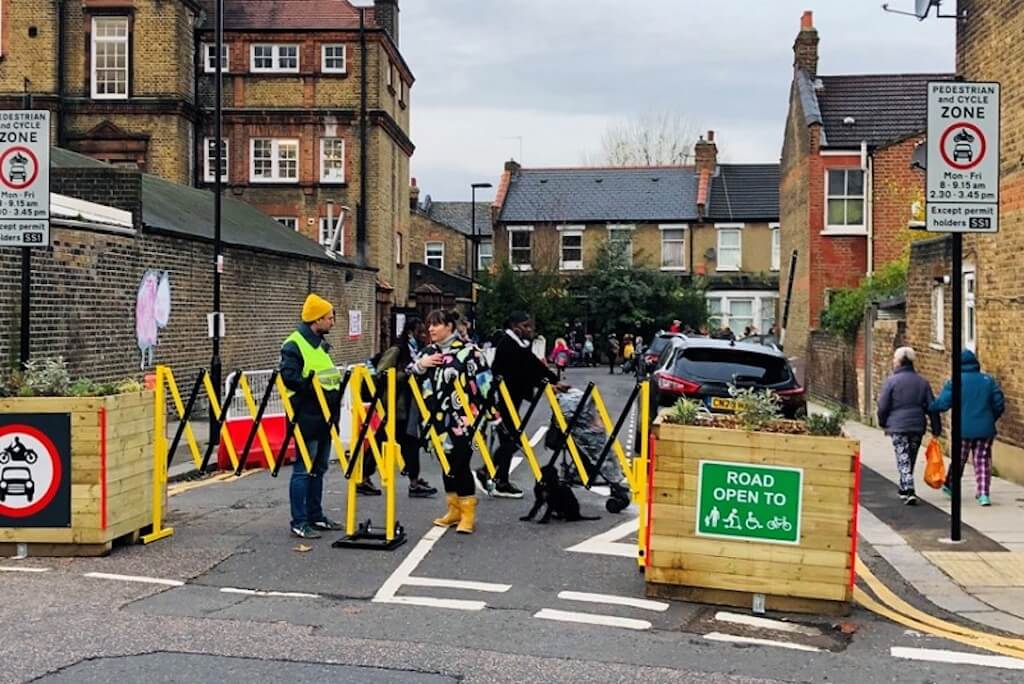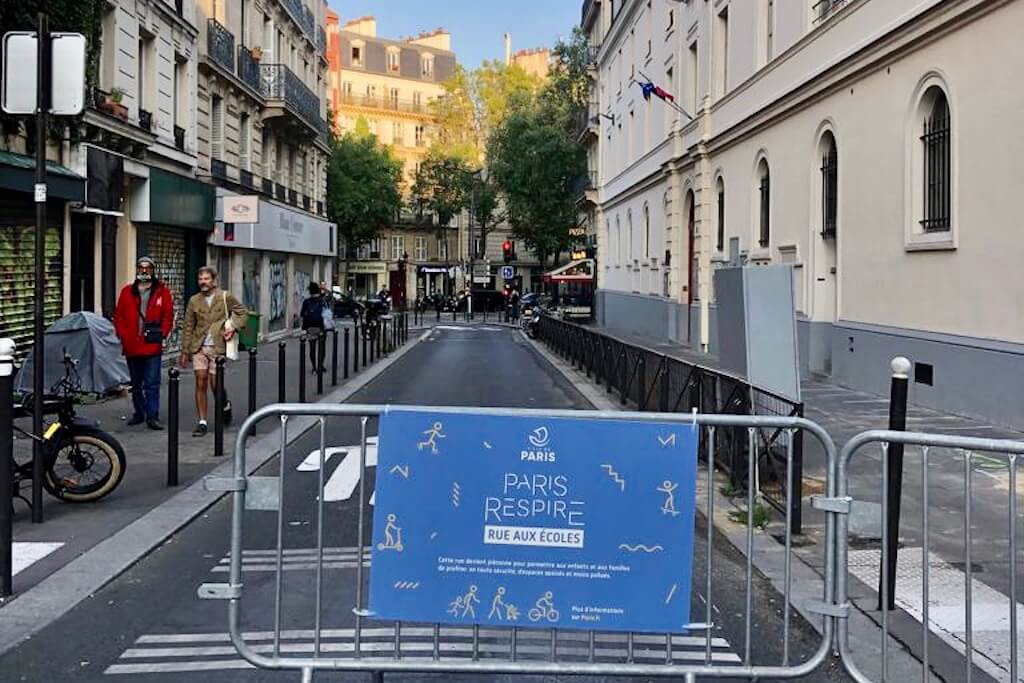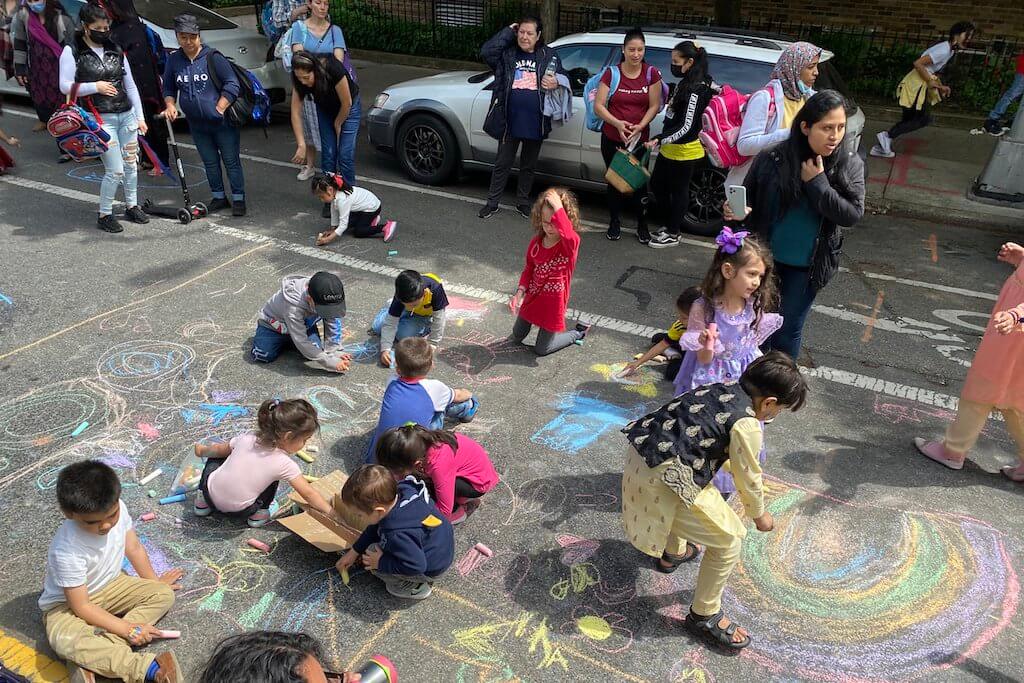Autumn Gear Guide
Find inspiration in our Gear Guide that will keep you out on your bike through wind or rain.
Download NowIn recent years, the adoption of school streets programs has been growing in many countries. These open streets programs are designed to provide safe spaces for children to engage in physical activity, such as walking or biking, by temporarily closing off streets near schools to traffic. The goal is to promote healthier lifestyles, reduce air […]
In recent years, the adoption of school streets programs has been growing in many countries. These open streets programs are designed to provide safe spaces for children to engage in physical activity, such as walking or biking, by temporarily closing off streets near schools to traffic. The goal is to promote healthier lifestyles, reduce air pollution, and enhance community cohesion. While the specific details of these programs vary, they generally involve collaboration between schools, local government agencies, and community organizations.
As the benefits of these programs become increasingly recognized, many cities are expanding their school open streets initiatives and seeking to make them a permanent part of their communities.
Programs to provide protected streets where motor vehicles are banned during school hours are taking off in London and Paris with New York City trying to drum up support for its program as well.
London is a bustling city known for its vibrant culture and rich history. But in recent years, the city has been facing a new challenge: air pollution. The London government has introduced the “School Streets” program to address this issue.

School Streets program in London, UK
The School Streets program is a city-wide initiative aimed at reducing air pollution and making the streets safer for children. The program involves temporarily closing the streets around schools during drop-off and pick-up times, to reduce traffic congestion and improve air quality.
The School Streets program is part of the Mayor of London’s wider Clean Air Action Plan, which aims to tackle the city’s air pollution problem. The program was first introduced in 2017 and has since been rolled out to over 500 schools across London.
“For London to become Net Zero by 2030, we need to reduce motor traffic by a third. The school run accounts for a quarter of morning traffic, so School Streets are a key tool in helping to drive down congestion, air pollution, and road danger,” said London Mayor Sadiq Khan. “They are making a massive difference to our capital’s communities, with more than half of London’s 5-11-year-olds now walking to school. We now have more than 500 School Streets across the capital and we know children, parents, and councils are keen to introduce even more.”
Research published by London’s City Hall, making use of the Breathe London air quality monitoring network, found that School Streets reduce nitrogen dioxide by up to 23 percent during morning drop-off.
During the program, streets around schools are closed to motor vehicles during drop-off and pick-up times. This means that only pedestrians and cyclists are allowed on the street, creating a safer environment for children to walk, cycle, and scoot to school. The closures are enforced by a network of volunteer “School Streets marshals”, who help to manage traffic and ensure that only authorized vehicles are allowed on the street.
The School Streets program has been well-received by parents, teachers, and local residents. According to a survey conducted by Transport for London, 86% of parents whose children attend a School Street supported the scheme. The program has also been shown to reduce air pollution around schools, with one study finding that nitrogen dioxide (NO2) levels decreased by 23% on School Streets days.
In addition to improving air quality and road safety, School Streets has also had other benefits. For example, it has encouraged more children to walk, cycle, and scoot to school, which is good for their health and well-being. It has also helped to build stronger communities, with parents and local residents working together to make their streets safer and cleaner.
Paris is also hard at work establishing a school streets program of its own, called Rues aux écoles. So far, the French capital has established 168 such streets, 114 since the summer of 2020.

Paris Rue aux écoles program
According to information provided by the city of Paris municipal government, there are 14 additional streets in the works.
But, the plan differs from London in that the move to remove cars is permanent and the streets are being turned over to other uses planting gardens, and spaces for kids to play.
“This system is part of a desire to provide security around schools and the fight against air pollution. The space recovered from the car makes it possible to green the city, to play, to stroll,” reads a city of Paris program outline.
Thus far, 22 schools have gone a step beyond closing the streets to motor vehicles and actually created new lanes with green spaces and tree plantings.
The purpose of lane pedestrianization is to make your children’s journey to their school safer. Removable barriers are installed when possible. They allow the passage of emergency vehicles and services (collection of household waste, etc.) but prohibit the passage of motorized vehicles.
Although it sounds like an effective program, there is growing sentiment in Paris that it isn’t happening fast enough. There have been protests to that effect demanding an acceleration as a way to allow their children to breathe easier in the congested city.
Paris is hoping to reach 300 streets with schools in 2026.
This contrasts with New York City where a school streets program is shrinking instead of growing.
“The program certainly has room for growth and is still coming into its own. Many of the schools we’ve spoken with have really appreciated our help in completing the application because they would not have had the time, resources, or energy to do it on their own,” says Sabina Unni, of Open Plans, one of the groups along with Transportation Alternatives working on the project. “Everyone at Open Plans believes there remains a lot of room for improvement and we are so excited to support schools and the DOT: just this past January we created a toolkit with some tips for schools to apply and hosted a toolkit workshop launch last month and continue to reach out to schools (if you’re a school reading this, send me an email and we can apply together!) As spring approaches we hope new school streets bloom.”

NYC School Street program utilizes street space in different ways during school hours
The approach in New York City is to allow schools to put barricades outside of the adjacent street before drop-off in the morning and take the barricades from the street after pick-up in the afternoon.
“Schools can turn the program into something as transformative and revolutionary and exciting and customizable as they’d like,” Unni says, “from extra room for lunch and recess to a warm gathering space for parents to gossip with each other and teachers at pick-up, to outdoor classrooms to environmental justice hubs for the school community.”
According to Transportation Alternatives, the number of school streets was 100 in January 2022 and 51 as of January 23, 2023.
“This is a pretty significant decrease: we have a lot of hypotheses about why the program is shrinking instead of growing, but we’re so enthusiastic to get the word out and help schools apply!” Unni says. “We also heard that this round of the program had a ton of new applicants (in addition to the 51), and fingers crossed they all get school streets.”
Unni says some of the challenges to the growth of the program include the following::
• Getting the school community (neighbors, community boards, skeptical parents) on board.
• Limited capital and lack of funding allocations that schools need to hire additional staff or additional hours or sufficient materials to program the street.
• Busy or overwhelmed administrators do not have time to complete the existing application.
• Barriers are hard to acquire and heavy – DOT provides them, but not every school knows this.
• Lack of widespread awareness about the program.
• Car culture!
“Big picture, we would love to see more funding allocated to this program, a continued push to spread awareness (that perhaps utilizes more informal or unconventional ways of reaching out to schools), and some operational improvements to support participating schools,” Unni adds.
School open streets programs have numerous benefits for both students and the community. By temporarily closing streets to cars, these programs promote physical activity, reduce air pollution, and create a safe space for children to play and socialize. Additionally, open streets programs can encourage community involvement and help foster a sense of neighborhood pride. As more schools and communities embrace the concept of open streets, we can hope to see improved health outcomes, increased social connections, and a greater appreciation for the importance of public space. Ultimately, school open streets programs have the potential to create happier, healthier, and more connected communities.
Let’s hope the concept spreads to more cities.
Find inspiration in our Gear Guide that will keep you out on your bike through wind or rain.
Download Now
Leave a comment